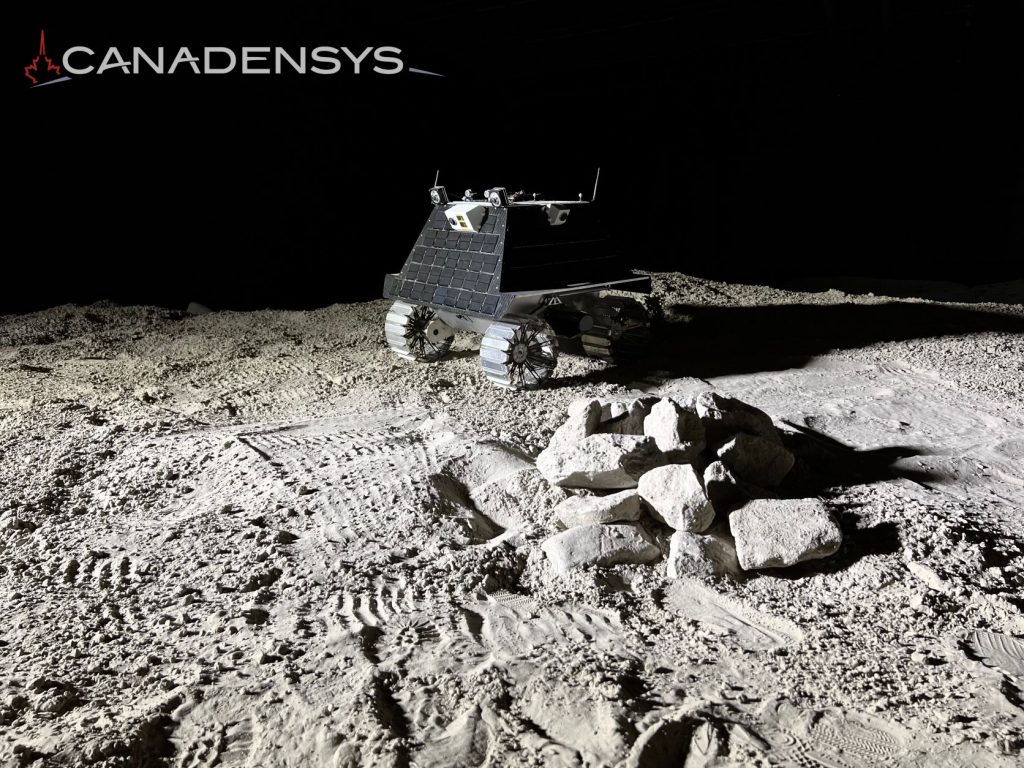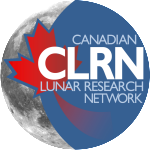
First Canadian Rover to Explore the Moon
Launch: No earlier than 2026
Current mission status: In development
Purpose: For the first time in history, a Canadian rover will traverse the lunar surface and contribute to the international search for water ice, which is a key component needed for the future of human space exploration.
Canada’s role:
Thanks to a close and ongoing collaboration between NASA and the Canadian Space Agency (CSA),the Canadian lunar rover will fly to the Moon as part of NASA’s Commercial Lunar Payload Services (CLPS) initiative. The rover will land at the south pole of the Moon, and will carry six scientific payloads: five Canadian and one American.
- Canadian academic and industrial contribution
Advancements in the Canadian space industry (academic and industrial) will be showcased, building on the success of past scientific instruments (e.g., NASA’s OSIRIS-REx mission). This mission is going to provide a demonstration of Canadian technology to set the groundwork for future Canadian lunar exploration.
As part of Canada’s ongoing plan for robotic space exploration, the CSA has been refining rover designs and expanding Canadian rover technology expertise for decades.
Why a rover and not a crewed mission?
While landers are limited to a single location, rovers can gather information on samples/environments at a variety of locations. Rovers act like the eyes and hands of scientists, allowing for specialist analysis of planetary surfaces remotely.
Using the tools and instruments designed by Canadian teams, rovers can help scientist learn more about important lunar resources that will be needed to establish a long-term presence/habitation on the Moon and use this as a stepping stone to send humans farther into space.
Who is building the Canadian rover?
Canadensys Aerospace Corporation (Canadensys) and its partners were selected in November 2022 to build the Canadian lunar rover and develop Canadian payloads. NASA will provide the sixth payload.
Canadensys will work with industrial and academic organizations:
- Industry
- Bubble Technology Industries – Chalk River, Ontario
- Leap Biosystems – Halifax, Nova Scotia
- Maya HTT – Montreal, Quebec
- Resonance Ltd – Barrie, Ontario
- Waves in Space Corporation – Cambridge, Ontario
- RF Collins Consulting Incorporated – Toronto, Ontario
- Academia
- Arizona State University – Tempe, Arizona (USA)
- Goonhilly – Helston, Cornwall (UK)
- NASA Ames Research Center – Mountain View, California (USA)
- Nokia – Dallas, Texas (USA)
- Planetary Science Institute – Tucson, Arizona (USA)
- Surrey Satellite Technology Limited – Surrey Research Park, Guildford (UK)
What will the Canadian rover do at the lunar surface?
The rover will explore a region of the lunar south pole and gather scientific data to help find water ice in permanently shadowed regions (PSRs) and give better insight into the lunar geology and environment at this previously unexplored region.
The rover will be able to:
- Drive into and operate inside of PSRs for up to one hour
- Survive lunar nights (− 170 °C to less than − 200 °C), which can last up to 14 Earth days
- Use multiple modes of communication
- Maximize lunar surface operations and scientific data return
- Provide panoramic imagery and video of the lunar surface
The rover will also navigate the surface of the Moon to test and demonstrate key systems like surface mobility, telecommunications, dust mitigation, navigation, and remote semi-autonomous control.
Rover operations will be performed in Canada, with both Canadian and American scientists permitted access to the data collected by the rover’s scientific payloads.
Objectives
The aims and objectives of the Canadian lunar rover mission are to:
- Travel on the surface of the Moon to assess system performances
- Showcase possible applications, feasibility, and performance of new technologies
- Make scientific measurements which will be use to determine the amount of hydrogen present in the Moon soil, which is one of the best indicators of water ice while defining at which temperatures it is detected
- Analyze the lunar soil to better understand the geology of various sites
- Assess lunar surface radiation to document how much radiation future astronauts will be exposed to
Why is finding water ice on the Moon important?
Water is an essential resource if humans want to stay on the Moon for longer than a few days. We need water, and the oxygen it provides, in order to live. It would also be used to produce hydrogen, which can be used as a source of energy to launch rockets from the lunar surface. Bringing water from Earth would be very expensive and complex and water is not present as a liquid at the lunar surface. Using water/water ice at the lunar surface will allow us to use the Moon as a stepping stone to explore Mars and beyond.
Why the lunar south pole?
Most previous lunar missions have focused on the nearside of the Moon. This means that this region of the Moon is well explored and its geology extensively documented. The farside of the Moon has been explored significantly less, due to technical constraints for rovers/scientific instruments communicating with teams back on Earth. The Yutu 2 rover which landed with the Chang’e 4 mission aimed to analyze the composition of basalts on the farside and compare these to basalts previously studied on the Moon’s nearside. Lunar Penetrating Radar revealed a paleo-surface at a depth of 7–20m and mapped a 270m buried crater with an estimated age of < 100 Ma. Upcoming rover and sample return missions will reveal even more information regarding this poorly explored region. The Canadian lunar rover mission is well placed to explore the lunar south pole and assess new technologies which may be used to support future habitation on the Moon.
